Bem-vindo a "Como ligar tiras de luz LED: Um guia para principiantes"! Se pretende tornar a sua casa mais luminosa, temos luzes coloridas e eficientes. As Fitas LED são um toque moderno na iluminação. São amigas do ambiente e dão um toque especial a qualquer espaço. Pronto para experimentar? Por favor, fique comigo.
Mas, espera, o que é que está envolvido na ligação destas fantásticas luzes? Se parece assustador, não receie. Este guia foi concebido para acompanhar os principiantes em todas as etapas do processo. Este guia contém informações sobre as Fitas LED. Explica o que são, porque é que as pessoas gostam delas e como utilizá-las em segurança. E sim, mesmo que seja novato nisto, é um projeto amigo do DIY!
Um pouco sobre mim - Chamo-me Tom, sou um entusiasta do mundo da iluminação LED desde 2005. O meu percurso neste domínio tem sido repleto de aprendizagem e inovação. Criei este guia para o ajudar a ligar as suas Fitas LED e a ter uma aventura divertida.
Então, está entusiasmado para começar? Este guia é o seu companheiro, quer pretenda um brilho subtil ou uma explosão de cores. Vamos mergulhar de cabeça e explorar juntos o potencial das Fitas LED. O seu caminho para uma casa mais vibrante e cheia de energia está à sua espera!
Compreender os princípios básicos
As fitas de LED são um farol de inovação e criatividade na iluminação moderna. É essencial compreender os fundamentos para embarcar nesta viagem iluminadora. Esta secção irá guiá-lo através de tudo o que precisa para as luzes de tiras LED.
Tipos de fitas de LED
Cor única
As Fitas LED de uma só cor são simples e elegantes, com um encanto intemporal. Estas tiras estão disponíveis em tons como branco quente, branco frio, azul, verde e vermelho. Emitem uma cor sólida. As tiras de LED de cor única são populares para casas e espaços comerciais. Podem criar uma atmosfera calma ou chamar a atenção para uma determinada área.
RGB (mudança de cor)
Pronto para dar um toque de diversão ao seu espaço? As fitas LED RGB (vermelho, verde, azul) abrem as portas a uma criatividade sem fim. Pode combinar três cores para criar muitos tons encantadores que podem melhorar o ambiente de qualquer divisão. As fitas LED RGB podem transformar qualquer divisão numa experiência de iluminação personalizada. Pode criar uma atmosfera de festa ou um ambiente tranquilo.
RGBW, RGBCCT e muito mais
As fitas de LED, tais como RGBW e RGBCCT, oferecem muitas opções para uma iluminação criativa. O RGBW adiciona um canal de branco puro, permitindo um espetro de cores mais completo e um controlo mais matizado. Para alternar entre uma luz acolhedora e energizante, altere a temperatura da cor utilizando o RGBCCT. Mergulhe neste mundo avançado; o céu é o limite para os seus projectos de iluminação!
Ferramentas e materiais necessários
Equipamento de segurança
A sua segurança é fundamental, por isso preste atenção ao equipamento de segurança essencial. As luvas mantêm as suas mãos seguras quando corta ou manuseia objectos. Os óculos de proteção protegem os olhos de faíscas ou detritos. Para sua segurança, tenha um kit de primeiros socorros por perto. Siga cuidadosamente as instruções do produto. A precaução é importante. É o primeiro passo em qualquer projeto bem sucedido, por isso, lembre-se disso.
Ferramentas de cablagem
A cablagem de fitas LED requer precisão e o conjunto de ferramentas adequado. Para dar forma às tiras, precisa de cortadores e descascadores de fios. Um ferro de soldar também é útil para efetuar ligações seguras. Dependendo da sua configuração, pode também precisar de pistolas de calor, fitas adesivas ou conectores. Se comprar boas ferramentas, a sua instalação durará mais tempo e o processo será mais fácil.
Transformadores, receptores & Controladores
Por último, os aparelhos que dão vida às suas Fitas LED. Os transformadores regulam a tensão, assegurando que esta corresponde aos requisitos das fitas LED. Alguns modelos permitem ajustar a cor, a luminosidade e os padrões com receptores e controladores. É importante escolher os acessórios corretos para as suas Fitas LED. Os acessórios devem corresponder ao tipo de luzes que possui, tais como de cor única ou RGB. A compatibilidade é fundamental. Escolha os transformadores, receptores e controladores certos para dar vida à sua visão.
Considerações sobre a tensão e ligações
A iluminação com fitas LED é mais do que apenas escolher cores bonitas ou designs criativos. Um projeto de iluminação bem sucedido exige também uma atenção meticulosa aos detalhes eléctricos. Para avaliar um ecrã, é necessário compreender a tensão, os transformadores, as ligações e os conectores. Vamos explorar estes componentes essenciais em profundidade.
Compreender a queda de tensão
A queda de tensão é um fenómeno que pode parecer complexo, mas o seu impacto nas Fitas LED é muito tangível. Essencialmente, é a perda de força da energia eléctrica à distância. As fitas LED podem ter um brilho irregular, fazendo com que algumas partes da fita pareçam mais fracas. Para evitar este problema, escolha os fios certos, com o tamanho certo, e mantenha a fonte de alimentação afastada das luzes. Compreender a queda de tensão ajuda a manter as suas luzes consistentemente brilhantes, realçando o seu espaço de forma bonita.
Escolher o transformador correto
Para que o seu projeto seja bem sucedido, as Fitas LED necessitam de um transformador que funcione. Verifique se a voltagem corresponde às suas Fitas LED e se cumpre os requisitos dos LEDs. A utilização de um transformador incorreto pode tornar as luzes demasiado fracas ou danificá-las. Informe-se sobre as suas Fitas LED para encontrar o brilho e a durabilidade que pretende. De seguida, escolha um transformador adequado.
P.S.: Leia este artigo sobre Como escolher a fonte de alimentação LED.
Ligação de aparelhos em paralelo
No que diz respeito às Fitas LED, ligá-las em paralelo é o segredo para obter uniformidade. A ligação em paralelo assegura uma tensão consistente, enquanto a ligação em série pode ter uma tensão flutuante. Todas as partes do circuito recebem a mesma potência, o que torna a iluminação uniforme e estável. Para que a iluminação da sua cozinha ou do exterior tenha um aspeto profissional, aprenda a ligar as luzes em paralelo.
Utilização de separadores de fios e conectores corretos
A cablagem não é apenas uma questão de ligações eléctricas, mas de criar um sistema seguro e de fácil manutenção. Utilizar as ferramentas certas para a cablagem facilita o processo e ajuda o projeto a durar mais tempo. Quando se utilizam os conectores corretos, as juntas ficam mais seguras e é menos provável que se soltem ou falhem. Os separadores de fios podem ajudar a manter os fios organizados, especialmente quando existem vários fios. As ferramentas certas no seu kit de ferramentas de cablagem podem ser heróis invisíveis para uma iluminação bonita no seu espaço. Quando se investe em boas peças, cria-se uma base sólida para um projeto de iluminação. O projeto será atraente e durará muito tempo, sendo também seguro.
Preparação para a instalação
O fascínio das Fitas LED reside na sua capacidade de combinar tecnologia com criatividade. A transformação que trazem aos espaços não é nada menos do que mágica. No entanto, como toda a boa magia, requer uma preparação meticulosa e atenção aos pormenores. Nesta secção, explicaremos como instalar as suas luzes LED. Iremos abordar a medição, a escolha de uma fonte de alimentação e o planeamento da disposição. Isto irá garantir que o seu projeto de iluminação tem um aspeto fantástico.
Medição e corte das tiras de LED
O ditado, "Meça duas vezes, corte uma vez", tem um significado especial nas Fitas LED. A exatidão das medidas é o ponto de partida para uma instalação profissional e polida. As Fitas LED têm linhas de corte para manter cada segmento a funcionar corretamente. É importante cortar apenas nas linhas designadas para evitar danos irreversíveis. Utilize uma fita métrica de qualidade e marque cuidadosamente os seus pontos de corte. Dar um pequeno passo pode definir o tom de todo o projeto, fazendo com que pareça feito à medida do seu espaço.
Seleção da fonte de alimentação correta
A força motriz por detrás do brilho das Fitas LED é, obviamente, a fonte de alimentação. Não se trata apenas de ligar e jogar. Certifique-se de que utiliza a fonte de alimentação correta que corresponda às necessidades de tensão e corrente das suas tiras. Uma correspondência incorrecta pode levar a um desempenho inferior, a avarias ou a danos irreparáveis. Uma boa fonte de alimentação garante que as suas Fitas LED brilham intensamente nas cores que escolheu. Pense nesta seleção como uma espécie de combinação. Quando os componentes funcionam bem em conjunto, o resultado é um grande sucesso.
Planear o layout
Dicas para um design estético
A instalação de Fitas LED é o ponto de encontro entre a tecnologia e a arte. A conceção do esquema não tem apenas a ver com a colocação, mas também com o seu bom aspeto. Comece por desenhar o seu projeto. Pense no local onde a luz vai brilhar e como se vai misturar com o que já lá está. Escolha cores que combinem bem com a área. Criar um ambiente harmonioso requer visão e uma abordagem cuidadosa. As suas luzes LED são como pinceladas numa tela, cada uma contribuindo para uma obra-prima.
Evitar erros comuns
Mesmo com a melhor das intenções, podem ocorrer erros. Saber o que deve ter em atenção pode poupar-lhe tempo, dinheiro e frustração. As curvas apertadas podem danificar os circuitos. A sobrecarga de um circuito pode provocar a sua falha. A utilização de peças incompatíveis pode arruinar todo o sistema. Estes problemas não são apenas aborrecimentos; podem impedir as suas ideias criativas. Para evitar estes erros, é necessário ter conhecimentos, planear bem e empenhar-se em fazer as coisas corretamente. A atenção a cada pormenor aproxima-nos da criação de um ecrã de iluminação LED. Este ecrã não só ilumina um espaço, como também o torna extraordinário.
Diferentes tipos de cablagem de fitas LED
Se tiver as ferramentas e os conhecimentos adequados, a instalação de fitas de iluminação LED pode ser divertida e criativa. Diferentes tipos de fitas LED requerem considerações de cablagem únicas. Vamos analisar cada tipo e fornecer orientações sobre como ligá-las eficazmente. Esta secção tem tudo o que precisa para iluminar uma divisão com uma cor ou criar um divertido ecrã de luzes.
Ligação de fitas LED de cor única
A elegância de uma instalação de Fita LED de cor única reside na sua simplicidade. O processo de cablagem para estas luzes é tão simples quanto possível. Consulte o diagrama de ligação das luzes LED acima: Primeiro, ligue a fonte de alimentação ao transformador. Em seguida, ligue o transformador ao recetor. Por fim, ligue a fita LED. Este fluxo linear cria uma fonte de luz harmoniosa e consistente. Se pretende um design simples e moderno, este processo cria um aspeto consistente que se enquadra em qualquer estilo.
Ligação de fitas LED brancas sintonizáveis
É possível controlar a luminosidade das fitas LED brancas sintonizáveis. Para tal, pode consultar o esquema elétrico das fitas LED acima. Com esta funcionalidade especial, pode alterar a iluminação de acordo com o seu estado de espírito ou a hora do dia. É uma forma inteligente de combinar a tecnologia com a estética.
Ligação de fitas LED RGB
Se o seu objetivo é obter uma variedade de cores, as Fitas LED RGB são a sua escolha. Para instalar estas luzes, deve ligá-las a controladores de cor para personalização. Estas luzes coloridas podem criar vários ambientes e tornar espaços regulares visualmente apelativos. Os designers e as pessoas que gostam de fazer os seus próprios projectos adoram as fitas LED RGB. Podem escolher e mudar facilmente as cores.
Ligação de fitas LED RGBW
As Fitas LED RGBW elevam a criatividade a um nível superior, adicionando luz branca à mistura colorida RGB. Necessitam de controladores e cablagem especiais para obter a mistura perfeita de cores. Pode alterar o aspeto da luz e dar-lhe uma sensação diferente, concebendo a iluminação.
Ligação da fita LED RGBCCT
O RGBCCT (vermelho, verde, azul, branco frio e branco quente) acrescenta o controlo da temperatura à mistura. Um controlador liga a cablagem. O controlador pode ajustar a temperatura da cor. Pode utilizar esta funcionalidade para controlar a atmosfera e torná-la quente ou fria, conforme pretender. É uma forma requintada de personalizar o seu espaço.
Ligação de fitas LED endereçáveis
As Fitas LED endereçáveis são uma maravilha no mundo do design de iluminação. Com estas luzes, é possível controlar cada LED separadamente. Para o fazer, é necessário ligá-las cuidadosamente, incluindo as linhas de transmissão de dados. Utilize esta funcionalidade para tornar mais criativos os designs detalhados e as experiências interactivas. As fitas de LED endereçáveis podem criar um efeito de ondulação ou uma pista de dança pulsante. Abrem um mundo de imaginação.
Guia de cablagem passo a passo
Quando se trata de ligar tiras de luz LED, o processo pode parecer assustador para quem é novo na área. Mas pode tornar a sua visão criativa numa realidade se tiver cuidado e compreender os passos. Este guia ajudá-lo-á a ligar o seu quarto e a transformar um canto escuro numa obra-prima brilhante.
Segurança em primeiro lugar - Precauções e configuração
Antes mesmo de pegar numa ferramenta, é vital dar prioridade à segurança. Para evitar lesões e erros, comece o projeto com cautela e prepare-se adequadamente.
1. Desligar a alimentação: Certifique-se de que a alimentação está completamente desligada para evitar choques acidentais. Este simples passo estabelece a base para um ambiente de trabalho seguro.
2. Utilizar ferramentas adequadas: Para se manter seguro, use luvas, óculos de proteção e utilize ferramentas isoladas para proteção extra. A segurança é fundamental; investir no equipamento correto pode fazer uma diferença significativa.
3. Ler as instruções: Antes de começar, certifique-se de que lê atentamente as instruções de cada fita LED que recebe. Para evitar erros e seguir o caminho correto, aprenda estas coisas.
Ligação à alimentação
Fazer a primeira ligação eléctrica é importante e requer uma atenção cuidadosa aos pormenores.
1. Ligar as tiras à fonte de alimentação: É necessário escolher um transformador que corresponda à tensão das suas fitas LED. Em seguida, ligue o transformador à sua fonte de alimentação. Uma ligação cuidadosa evita qualquer problema elétrico indesejável.
2. Assegurar um fluxo de energia adequado: Antes de prosseguir, é aconselhável verificar as ligações com um multímetro ou uma ferramenta para confirmar o fluxo de energia. Isto garante que tudo está a funcionar corretamente antes de prosseguir.
Fixação das fitas de LED
Uma vez instalada a alimentação, é altura de posicionar as tiras de LED.
1. Colocar as tiras na disposição pretendida: Dependendo do seu desenho, disponha as tiras no padrão que pretende. É aqui que a sua criatividade brilha, por isso, não se apresse a fazer tudo corretamente.
2. Escolher o adesivo ou os lábios corretos: Para garantir que as tiras de LED se mantêm no lugar, escolha o adesivo ou os clipes corretos para a superfície e o tipo de tira. A fixação segura é essencial tanto para a estética como para a funcionalidade.
Soldadura e cablagem
Para terminar esta fase sem problemas, são necessários mais conhecimentos técnicos. Mas, se for paciente, é possível fazê-lo.
1. Soldadura: Se precisar de soldar, utilize um ferro de soldar para fazer ligações seguras. A soldadura pode proporcionar um acabamento mais duradouro e de aspeto mais limpo.
2. Seguro e isolado: Certifique-se de que os fios estão seguros e devidamente isolados. Isto evita curtos-circuitos e dá um bom aspeto.
Testes e resolução de problemas
Por fim, é altura de dar vida ao seu projeto e de resolver quaisquer problemas inesperados.
E se não funcionar?
1. Verificar todas as ligações: Se algo não estiver a acender como esperado, comece por examinar todas as ligações. Um fio solto ou uma ligação incorrecta podem muitas vezes ser os culpados.
2. Verificar a compatibilidade da tensão e da fonte de alimentação: Verifique se a fonte de alimentação é compatível com as suas fitas LED. Uma incompatibilidade pode levar a uma necessidade de maior funcionalidade.
3. Consultar um profissional, se necessário: Se tudo o resto falhar e a solução não for evidente, procure ajuda profissional. Por vezes, um olho especializado pode identificar e resolver rapidamente o problema.
Considerações e opções avançadas
A iluminação com fitas LED permite-lhe criar cenários de iluminação únicos e criativos. Mas, para obter os melhores resultados, temos de lidar com algumas questões complexas que acompanham estas oportunidades. Nesta parte, vamos analisar as partes pormenorizadas da iluminação com fitas LED e como utilizá-las em seu benefício.
Opções de reguladores e controladores para LEDs
As fitas LED têm a notável capacidade de funcionar com vários reguladores de intensidade e controladores. Pode ajustar a sua iluminação para corresponder a diferentes estados de espírito, eventos ou preferências.
1. Compreender a compatibilidade dos reguladores de intensidade luminosa: Nem todas as fitas LED são compatíveis com todos os reguladores de intensidade luminosa. Compreender as especificações das suas tiras de LED ajudá-lo-á a selecionar o regulador de intensidade adequado. Certifique-se de que verifica os requisitos de tensão e a compatibilidade com modelos de LED específicos.
2. Escolher os controladores certos: Os controladores permitem-lhe manipular a cor, o brilho e os padrões. Escolher o controlador certo para o seu sistema dá-lhe opções criativas e funcionais. Existem controladores com integração de smartphone, controlos remotos e até capacidades de comando por voz.
3. Experiência personalizada: Com a combinação certa de reguladores de intensidade luminosa e controladores, o seu ambiente de iluminação torna-se mais do que uma mera iluminação. Pode moldá-lo para mostrar emoções, beleza ou utilidade, e torná-lo interativo.
Ligações cruzadas e como evitá-las
Quando se lida com cablagens complexas, as ligações cruzadas são um grande problema. Podem causar o caos em todo o sistema. Eis como pode evitar este problema comum mas grave:
1. Planeamento adequado: Para evitar confusões, planeie a cablagem com antecedência. Deste modo, assegurará a clareza e evitará ligações cruzadas.
2. Técnicas de cablagem correctas: Para ligações fiáveis, utilize ferramentas adequadas e siga as melhores práticas de cablagem. Isto inclui códigos de cores, etiquetagem e inspecções regulares durante a instalação.
3. Atenção aos pormenores: Para poupar tempo e dinheiro mais tarde, é importante ser cuidadoso e minucioso no seu trabalho. Verifique tudo à medida que avança. Um erro aparentemente menor pode levar a danos significativos se não for identificado atempadamente.
Ideias criativas e inspiração
As fitas de iluminação LED oferecem-lhe uma infinidade de oportunidades de criatividade e inovação. Se é designer de interiores ou proprietário de uma casa, aqui estão algumas ideias para mudar a sua sala de estar.
Como utilizar as fitas LED em diferentes divisões
As fitas LED podem revolucionar verdadeiramente o ambiente de uma divisão. Pode experimentar diferentes efeitos em diferentes espaços porque estas luzes são versáteis.
1. Cozinhas: Utilize tiras de LED debaixo dos armários para um toque moderno e funcional. Se escolher a temperatura de cor correcta, pode tornar os cozinhados mais agradáveis e melhorar o aspeto.
2. Quartos de dormir: As tiras de LED atrás das cabeceiras ou à volta dos espelhos criam uma atmosfera calma e íntima. Experimente as cores para descobrir o que o acalma ou energiza.
3. Salas de estar: Para tornar a sua sala de estar elegante e convidativa, coloque tiras de LED estrategicamente. Coloque-as à volta de sistemas de entretenimento, estantes de livros ou peças de arte.
4. Espaços exteriores: Dê asas à criatividade em pátios, jardins ou piscinas com as fitas LED à prova de água. Estas podem transformar um espaço exterior normal numa área de entretenimento animada.
P.S.: Temos artigos separados sobre as ideias de utilização de tiras de LED. Consulte abaixo:
37 ideias de fitas LED para transformar o ambiente do seu quarto
As melhores ideias de fitas LED: 43 maneiras insanamente fixes de utilizar as fitas de LED
Combinação com outros tipos de iluminação
As fitas LED não têm de ficar isoladas. Para melhorar o seu design de iluminação, misture a iluminação tradicional com profundidade, textura e camadas.
1. Disposição em camadas com iluminação ambiente: Para criar um visual mais interessante, combine as fitas LED com candeeiros de teto ou arandelas de parede.
2. Misturar com iluminação de trabalho: Em espaços de trabalho, cozinhas ou áreas de estudo, a combinação de tiras de LED com luzes de trabalho melhora a função e o aspeto.
3. Criar efeitos dramáticos com iluminação de realce: As tiras de LED podem realçar características arquitectónicas ou obras de arte. Outras luzes de realce criam profundidade e sombra, tornando a experiência visual mais dinâmica.
4. Considerações sobre a sustentabilidade: As fitas de LED são eficientes em termos energéticos e podem ser uma adição sustentável aos sistemas de iluminação tradicionais, reduzindo o consumo de energia sem comprometer a beleza e a funcionalidade.
O mundo das fitas LED é rico em possibilidades. Quando melhorar o seu sistema, lembre-se de factores importantes e procure ideias criativas para personalizar os espaços. Independentemente de ser um especialista ou um entusiasta da bricolage, estes conhecimentos ajudá-lo-ão a dar vida às suas visões de iluminação.
Manutenção das suas fitas de LED
Cuidar das fitas de iluminação LED envolve mais do que apenas garantir que continuam a funcionar. Também é importante proteger a sua aparência e eficácia. Cuidar bem destas luzes versáteis pode fazer com que se mantenham brilhantes e fiáveis durante muito tempo. Nesta secção, vamos falar sobre como cuidar das suas luzes de fita LED. Isto envolve limpeza, manutenção e saber quando as deve substituir.
Limpeza e manutenção
Tal como o resto da sua casa ou escritório, as fitas LED necessitam de uma limpeza regular para se manterem brilhantes e a funcionar bem. No entanto, a limpeza destes produtos delicados requer mais do que uma passagem de pano aleatória. Aqui está um guia completo para manter as suas tiras de LED nas melhores condições:
1. Escolher as ferramentas correctas: Para limpar as fitas LED, utilize um pano macio, como microfibras. Este material não risca nem danifica a superfície.
2. Seleção de um produto de limpeza adequado: Para escolher um bom produto de limpeza para LEDs, escolha um que seja suave e não tenha químicos agressivos. Uma simples mistura de água e detergente suave da loiça pode muitas vezes ser eficaz.
3. Evitar a água: Para evitar problemas, não exponha as tiras de LED à água, mesmo que sejam à prova de água. Humedeça sempre o pano em vez de aplicar água diretamente nas tiras de LED.
4. Técnica de limpeza: Para evitar riscos e danos, passe o pano suavemente numa direção consistente ao limpar. É importante que seja delicado. Esfregar com demasiada força pode danificar os LEDs ou o revestimento protetor.
5. Frequência da limpeza: A limpeza regular é vital, mas a frequência depende da localização e da utilização das fitas LED. Pode ser necessária uma limpeza mais frequente numa cozinha ou noutras áreas de tráfego intenso.
6. Consideração sobre as fitas LED para exterior: As faixas exteriores podem exigir uma atenção especial, incluindo a verificação do desgaste provocado pelas condições climatéricas. É fundamental seguir as instruções do fabricante para a limpeza e manutenção no exterior.
Quando substituir as fitas LED
As fitas de iluminação LED são conhecidas pela sua longevidade, mas mesmo os melhores produtos têm um tempo de vida útil. Para manter as suas luzes em boas condições, preste atenção aos sinais de desgaste e substitua-as quando necessário.
1. Diminuição do brilho: Considere uma substituição se as tiras de LED perderem o seu brilho ou parecerem baças. A diminuição do brilho pode ser um sinal de envelhecimento ou de danos internos.
2. Inconsistência de cor: Os LEDs podem apresentar cores inconsistentes ao longo do tempo. Se a recalibração não resolver o problema, isso pode indicar que os LEDs estão a chegar ao fim da sua vida útil.
3. Danos físicos: Qualquer dano visível, como fissuras ou secções partidas, é um sinal claro da necessidade de substituição. Os danos físicos podem não só afetar a aparência, mas também levar a problemas de segurança.
4. Cintilação ou falha intermitente: Estes sinais podem indicar problemas internos que não podem ser reparados. Embora, por vezes, o problema possa estar relacionado com a fonte de alimentação ou com as ligações, a substituição é provavelmente o passo seguinte se estas forem excluídas.
5. Considerações sobre a eficiência energética: As fitas LED mais antigas podem ser menos eficientes em termos energéticos do que os modelos mais recentes. A atualização para uma versão mais avançada pode poupar custos de energia a longo prazo.
6. Conformidade com as normas mais recentes: A tecnologia evolui, assim como as normas de segurança e desempenho. Manter-se a par das mais recentes normas da indústria, substituindo as fitas LED desactualizadas, pode ser essencial para manter um sistema de iluminação seguro e eficiente.
FAQs
Quais são os 4 fios da fita LED RGB?
Uma fita LED RGB tem normalmente 4 fios. Estes fios representam as cores primárias (vermelho, verde e azul) e um fio terra ou de alimentação comum. A combinação destas cores em diferentes intensidades permite obter uma vasta gama de cores.
Como é que se ligam várias fitas de LED?
Para fazer funcionar várias fitas LED, ligue-as em paralelo a uma fonte de alimentação adequada. Para o efeito, pode utilizar conectores ou soldar. Certifique-se de que a fonte de alimentação pode suportar o consumo total de corrente de todas as tiras ligadas.
É possível unir tiras de luz LED?
As tiras de LED podem ser unidas utilizando conectores ou soldadura. Para obter os melhores resultados, alinhe corretamente as ligações e siga as instruções do fabricante.
É melhor ligar os LEDs em série ou em paralelo?
As tiras de luz LED têm um melhor desempenho quando ligadas em paralelo, uma vez que isto permite que cada tira retire energia por si só. A ligação em série pode criar problemas de queda de tensão, levando a um brilho inconsistente.
Como é que ligo várias fitas LED à minha fonte de alimentação?
Para ligar muitas fitas de LED a uma fonte de alimentação, determine a tensão e a corrente totais necessárias. Para ligar as tiras, utilize uma fonte de alimentação que cumpra as especificações. Ligue-as em paralelo com conectores adequados ou técnicas de soldadura.
De que fonte de alimentação necessito para as fitas LED?
As luzes de fita LED requerem uma fonte de alimentação que corresponda às suas necessidades de tensão e corrente. Quando estiver à procura de uma fonte de alimentação, procure uma que cumpra estes requisitos. Certifique-se de que tem alguma capacidade extra para segurança e eficiência.
Todas as fitas de LED precisam de um transformador?
A maioria das tiras de luz LED precisa de um transformador para mudar a voltagem doméstica para os LEDs. Para saber o que as suas tiras de luz precisam, consulte as instruções do fabricante.
É possível ligar as fitas de LED a um interrutor?
Sim, pode ligar as tiras de LED a um interrutor para controlar facilmente a sua ligação e desligamento. Para seguir a forma habitual de ligação, ligue o interrutor entre a fonte de alimentação e as tiras de LED.
Quais são os 3 fios das fitas LED brancas sintonizáveis?
As fitas LED brancas sintonizáveis têm 3 fios: positivo, negativo e uma linha de dados para controlo da cor. Pode alterar a cor branca para criar diferentes ambientes ou efeitos.
Como é que posso combinar criativamente as fitas LED com outros tipos de iluminação?
A combinação de tiras de LED com iluminação tradicional pode criar efeitos únicos. Torne o seu design de iluminação mais excitante, utilizando cores, padrões e posições diferentes com outras luzes.
Conclusão
Ao terminarmos este guia detalhado sobre as fitas LED, vamos rever os pontos importantes. Também queremos encorajá-lo a experimentar coisas novas e a partilhar connosco as suas ideias e projectos. A iluminação faz mais do que apenas fornecer luz. Também define o ambiente, melhora os espaços e cria uma atmosfera. Com as fitas de LED, estas possibilidades são ilimitadas.
A cablagem e a instalação de Fitas LED podem ser projectos de bricolage gratificantes e emocionantes. Esta opção de iluminação requer precisão, criatividade e compreensão das suas muitas facetas. Aqui está um resumo rápido do que abordámos:
1. Preparação e planeamento: Desde a medição e o corte das tiras de LED até à seleção da fonte de alimentação adequada, é fundamental preparar o terreno.
2. Diferentes tipos de cablagem: Compreender as necessidades específicas de cablagem para as várias fitas LED garante uma instalação sem falhas.
3. Guia de cablagem passo a passo: A segurança em primeiro lugar, seguida de ligações e testes sistemáticos, cria um processo de instalação sem problemas.
4. Considerações avançadas: Dimmers, controladores e evitar ligações cruzadas contribuem para uma experiência de iluminação mais avançada e personalizada.
5. Ideias criativas: A inspiração para utilizar as fitas de LED em diferentes divisões e a combinação com outros tipos de iluminação abre um mundo de oportunidades criativas.
6. Manutenção e conservação: Uma limpeza adequada e o conhecimento do momento certo para substituir as fitas LED garantem um funcionamento ótimo.
Para aprender e sentir-se mais confiante na utilização de fitas de iluminação LED, concentre-se nestes pontos-chave.
As fitas LED são uma tela para a criatividade. Não existe uma abordagem única para todos; a diversão está muitas vezes na experimentação. Tem muitas opções para criar a atmosfera certa em cada área da sua casa.
1. Brincar com cores e padrões: As fitas de LED oferecem várias opções de cores e padrões. A experimentação com estas pode levar a efeitos únicos e personalizados.
2. Combinar com a iluminação existente: Não hesite em misturar as fitas LED com a iluminação tradicional. Esta fusão pode dar profundidade e inovação ao seu projeto.
3. Experimentar controladores: Jogar com diferentes opções de controlo pode ajudá-lo a encontrar o ambiente de iluminação perfeito, desde reguladores de intensidade luminosa a controladores de cor.
Lembre-se, o processo é tão agradável como o resultado. Abrace a viagem da experimentação e da criatividade.
A escolha do parceiro certo faz toda a diferença na iluminação do seu espaço. Unitop é um fabricante líder na China para Fitas de LED e LED neon flex. Oferecemos produtos de alta qualidade e designs inovadores. A nossa paixão pela iluminação e o nosso compromisso com a excelência garantem-lhe o melhor. Tem curiosidade em saber o que a iluminação LED pode fazer pela sua casa ou empresa? Tem necessidades ou perguntas específicas? Contacte-nos imediatamente. Quando escolhe a Unitop, não está apenas a adquirir luzes. Está a adquirir uma marca LED fiável. Vamos iluminar o seu mundo juntos com a Unitop.

Tom é agora o Gerente de Vendas de Unitop (China) Co., Limited. Ele tem estado no Iluminação LED indústria desde 2005. Ele é um especialista em vendas & marketing, e gestão de fábricas. Ele gosta de musculação, e é também um fã louco da Apple! Ele é um tipo trabalhador e adora aprender e experimentar coisas novas.
Email: tom@unitopledstrip.com WhatsApp: +86-18680307140

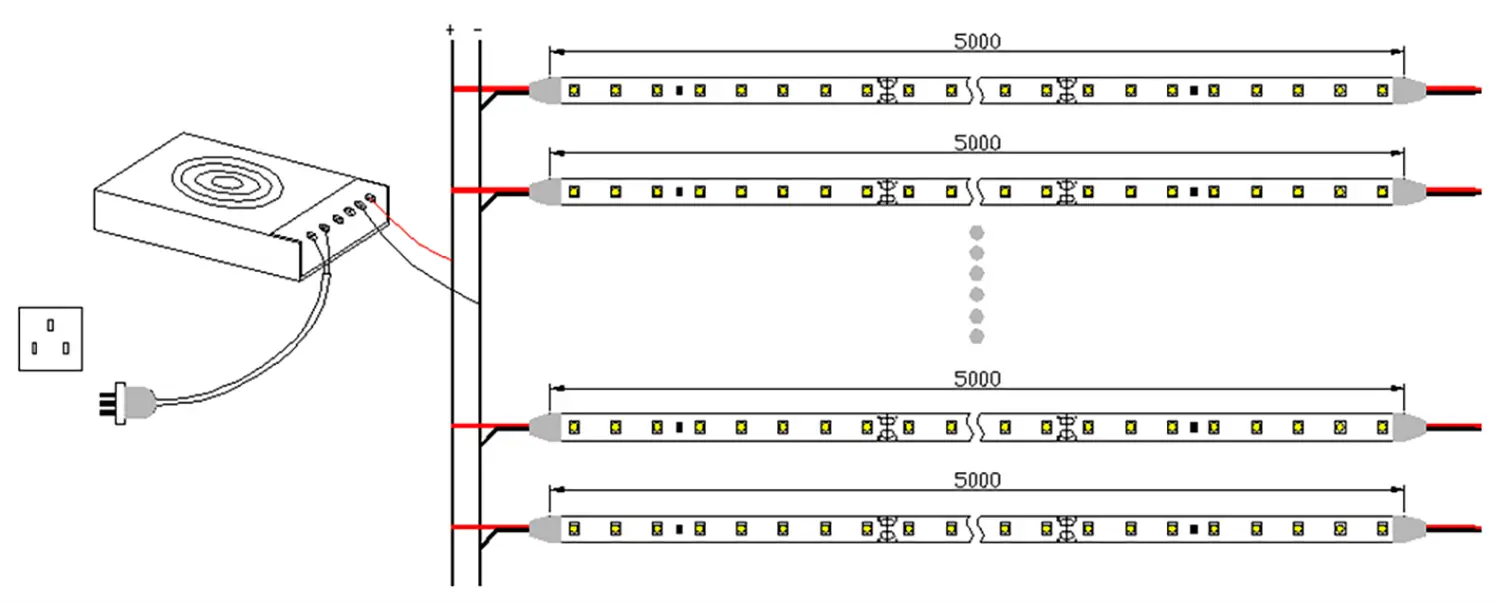
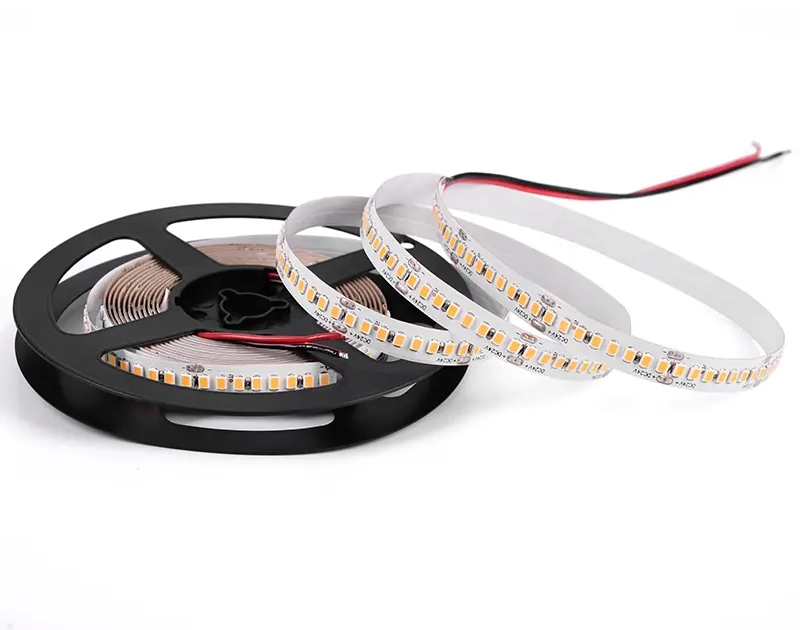
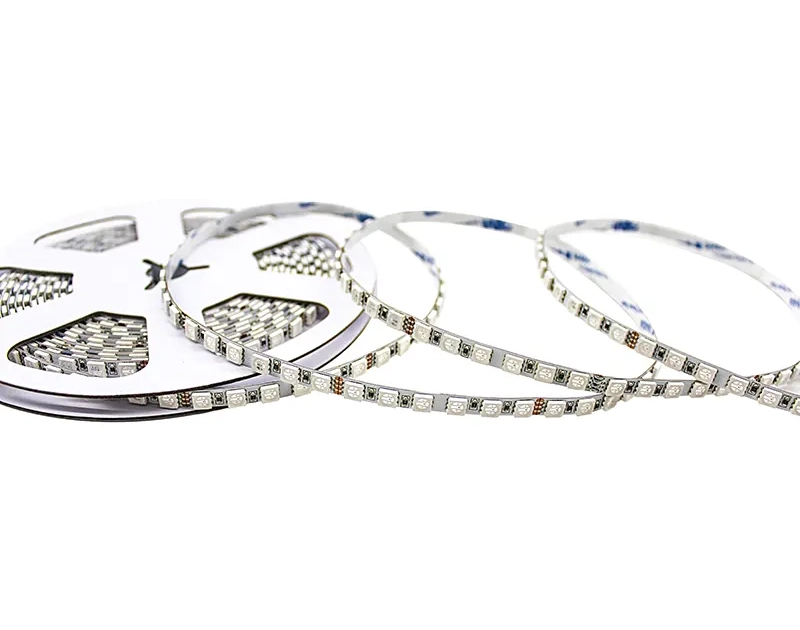
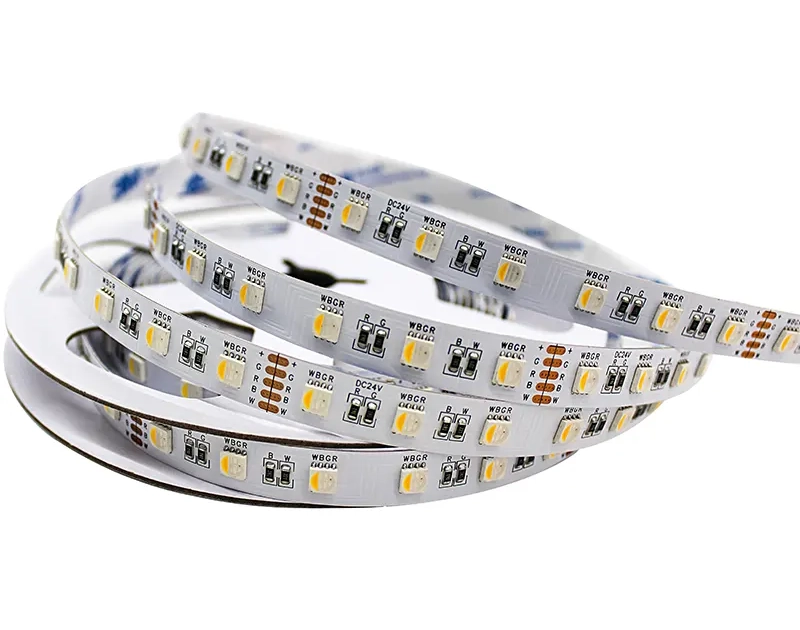
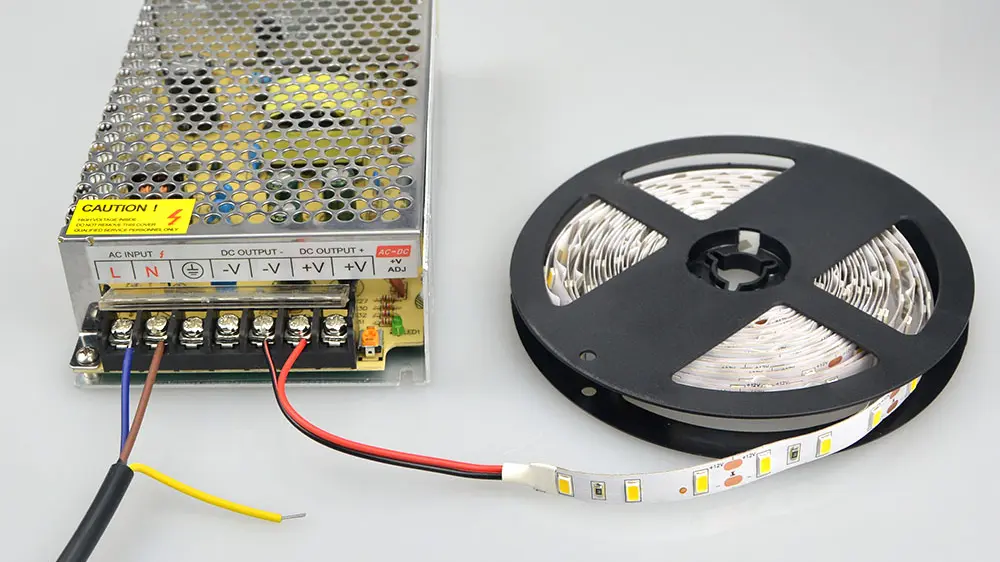
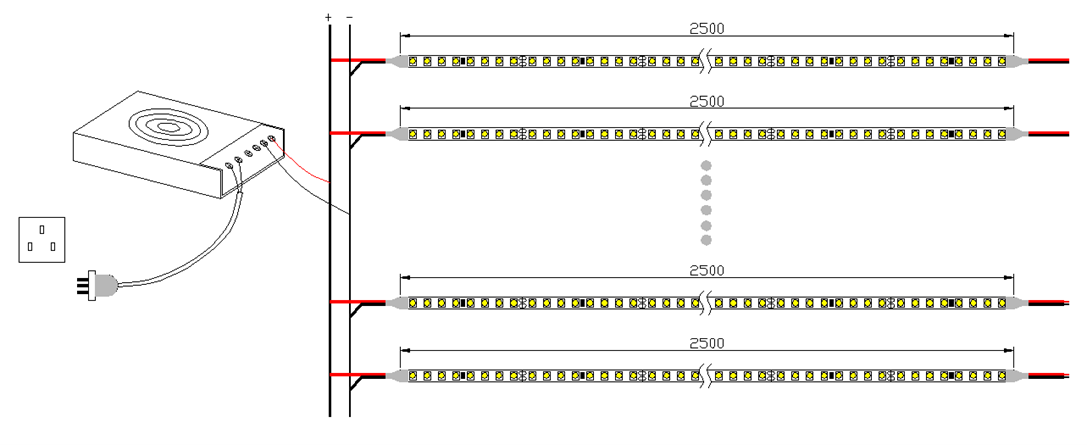
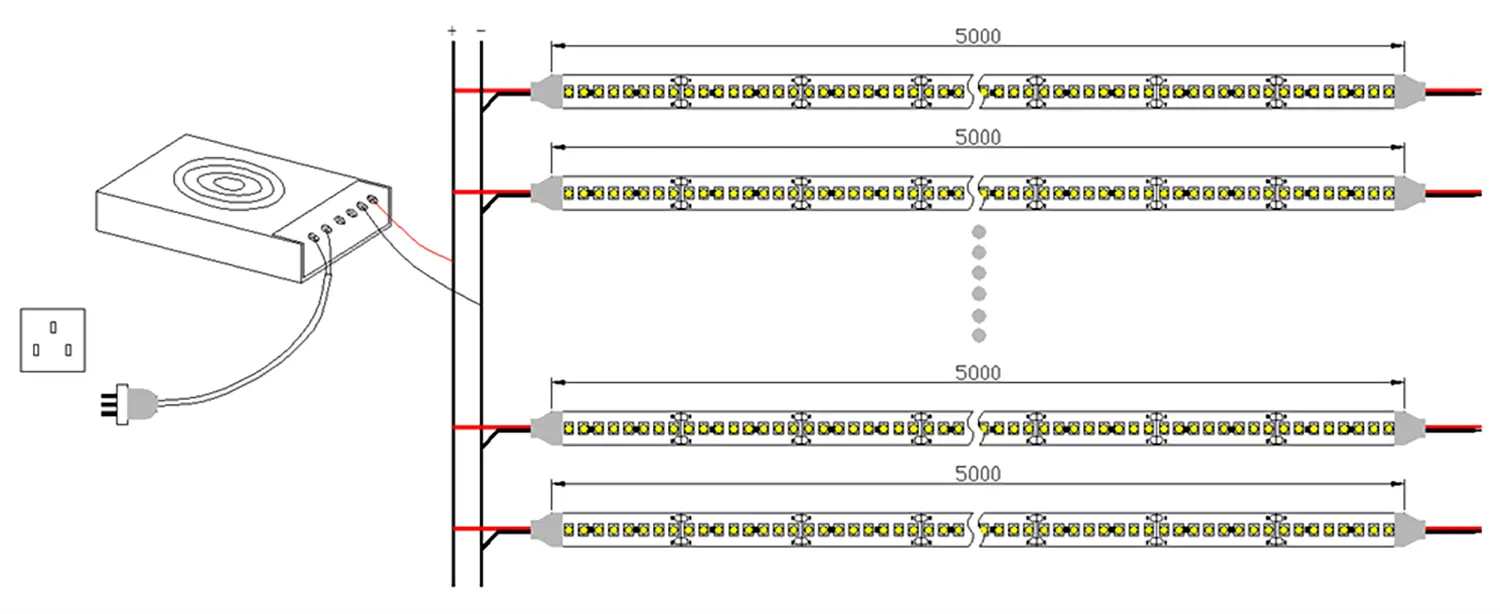
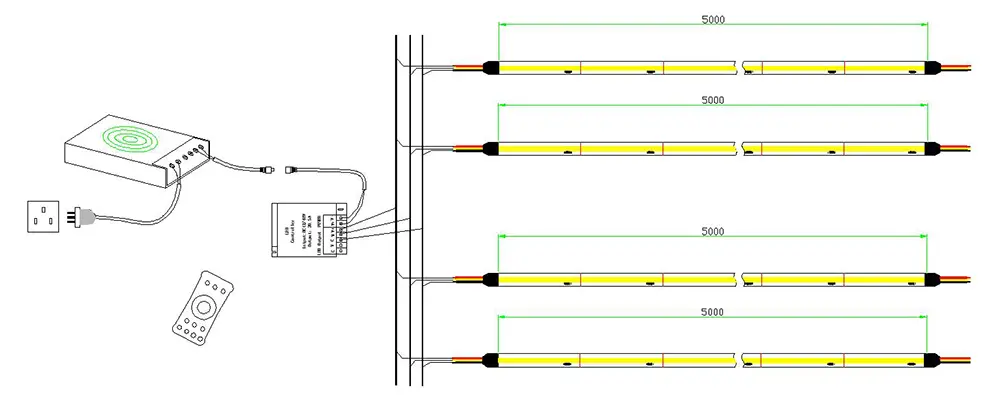


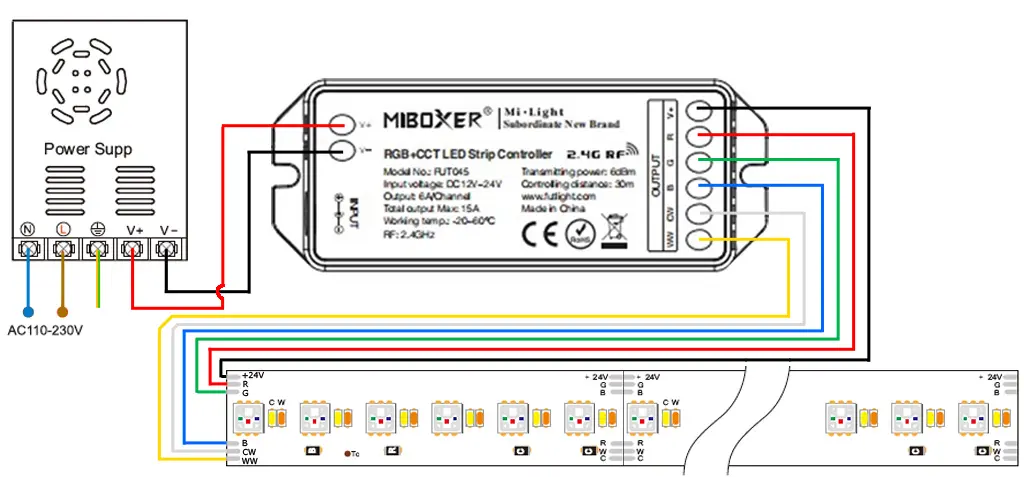
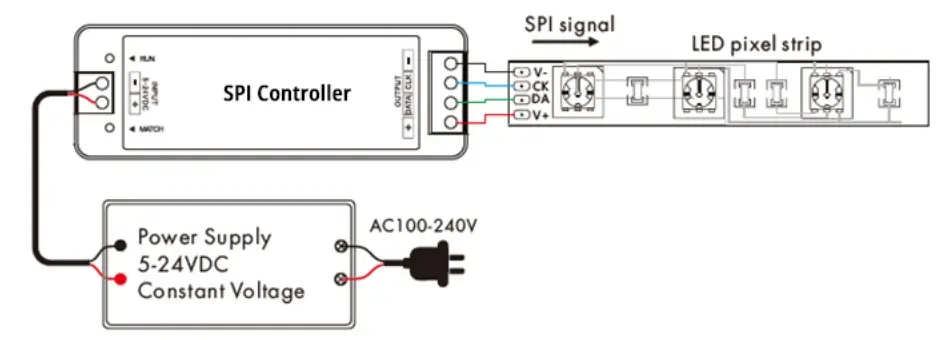
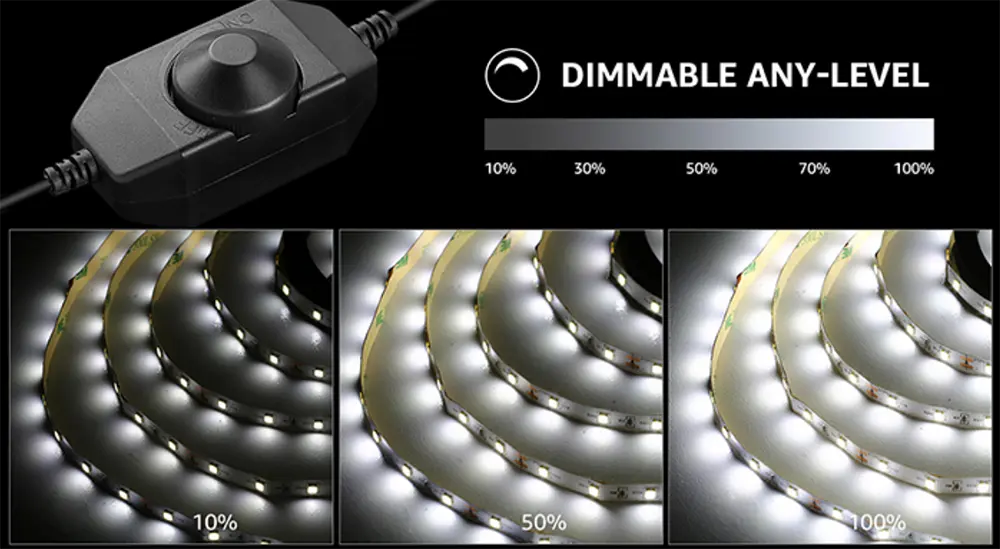


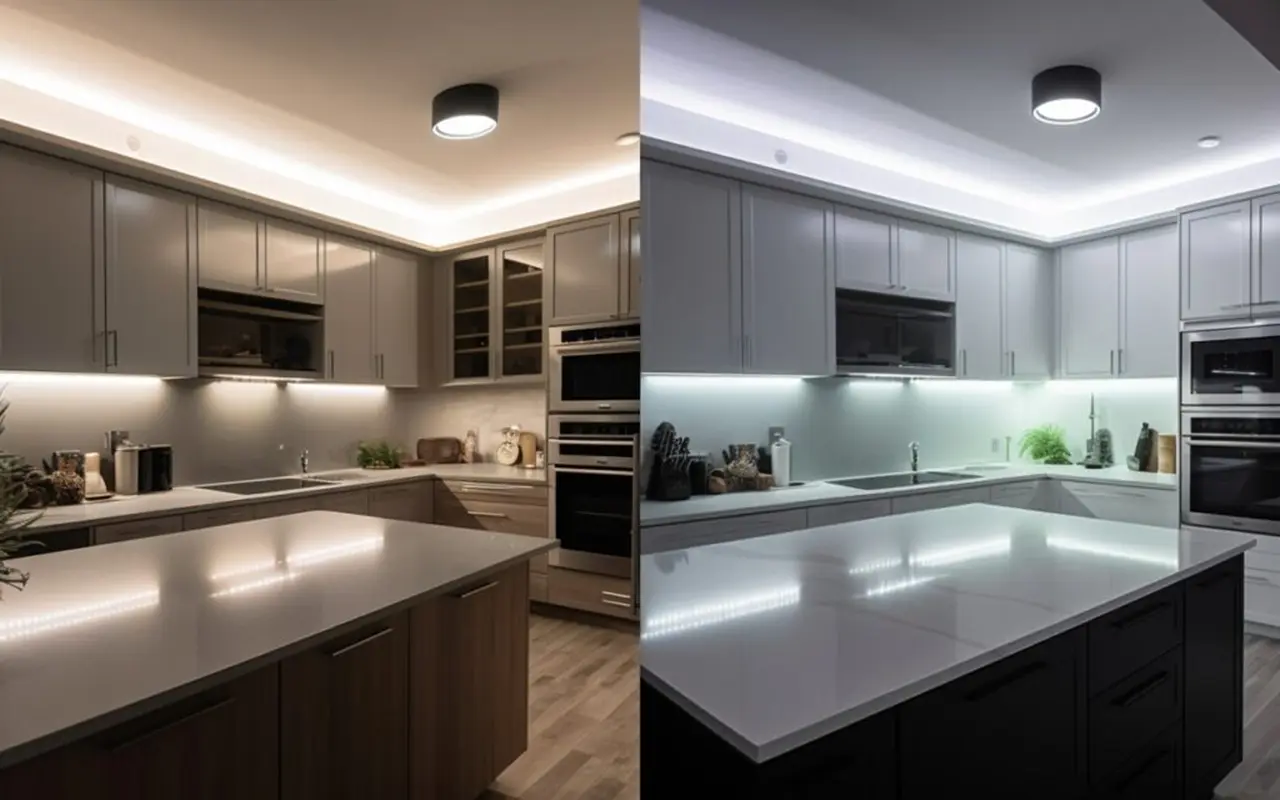
Deixe uma resposta
Quer juntar-se à discussão?Esteja à vontade para contribuir!